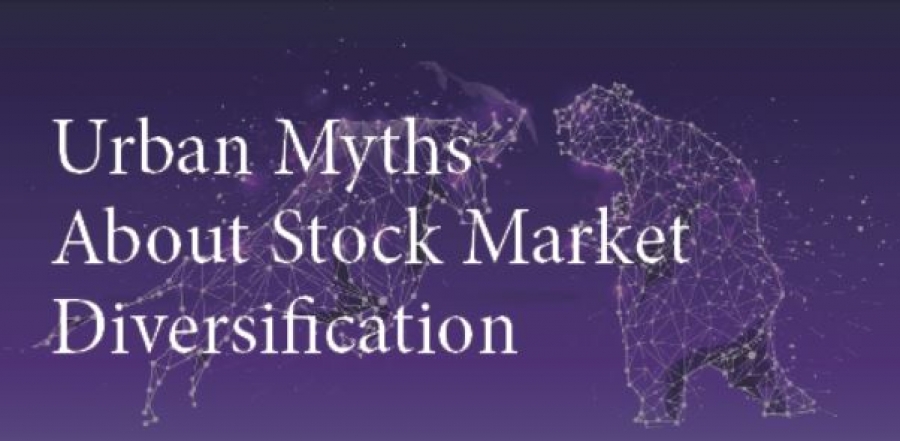
Does international diversification really reduce risk?
DOWNLOAD A PDF PRINTABLE VERSION
Investors have been trying to create the optimal trade-off between risk and return ever since Nobel laureate Harry Markowitz fathered modern portfolio theory with the publication of his efficient frontier theory in 1952. Then, when Roger Ibbotson and Rex Sinquefield updated their annual “Stocks, bonds, bills and inflation” data to include international stock returns, many consultants started to include international stocks in their portfolio mix.
And why not?
In the eighties and nineties, international stocks out-performed domestic stocks — albeit with some increased volatility. The returns on those international stocks didn’t appear to be highly correlated with domestic stocks, thus reducing volatility and increasing their attractiveness as a part of a well-diversified portfolio.
But what has happened once liquidity, information, and money flows evolved?
Looking at the period December 1998 through March 2019, we’ve logged 81 quarters in the record books. Twenty four of those eighty-one quarters showed declines in the S&P 500 Total Return Index. So, despite the index advancing 240%, thirty percent of the quarters showed negative returns.
How did international stocks1 perform in down markets?
The MSCI EAFE (ex US) was positive in 4 of the 24 quarters that the S&P 500 registered declines. So almost 17% of the quarters international stocks offset declines in the domestic index.
Sounds pretty good, doesn’t it?
What we all really want is a hedge against significant drawdowns. The 9 quarters that registered over 10% declines were matched by double-digit declines in the international index 8 times. In the June 2002 quarter, the international market declined 2.30% compared to the 13.4% decline in the S&P index.
Every other double-digit decline was matched with a double-digit decline that amplified, not moderated volatility!
The conclusion:
You may wish to allocate money to international stocks when you have a solid expectation for higher returns than in the domestic markets but over the last twenty years, international equities have been grossly inadequate in moderating domestic equity market drawdowns.
Thomas G. Plumb is the founding principal of Wisconsin Capital Management, LLC (formerly Thompson Plumb & Associates), which began in 1984. In addition to his roles with the Funds, Tom maintains an ownership interest in and serves as the president of SVA Plumb Financial, LLC, an affiliated entity.
Thomas G. Plumb is the founding principal of Wisconsin Capital Management, LLC (formerly Thompson Plumb & Associates), which began in 1984. In addition to his roles with the Funds, Tom maintains an ownership interest in and serves as the president of SVA Plumb Financial, LLC, an affiliated entity. Tom formerly was the lead portfolio manager of Dreyfus Premier Balanced Opportunity Fund. He earned a bachelor of business administration from the University of Wisconsin-Madison in 1975, is a member of the Madison Investment Management Society and holds the Chartered Financial Analyst designation.
Important information
1 International stocks as represented by MSCI EAFE. The MSCI EAFE Index is an equity index which captures large and mid-cap representation across 21 Developed Markets countries around the world, excluding the US and Canada. With 924 constituents, the index covers approximately 85% of the free float-adjusted market capitalization in each country.
S&P 500 is an unmanaged index which is widely regarded as the standard for measuring large-cap U.S. stock market performance.
Opinions expressed are those of the speaker as of June 13, 2019, and are subject to change, are not intended to be a forecast of future events, a guarantee of future results, nor investment advice.
Past performance does not guarantee future results. Index performance is not illustrative of Plumb Funds’ performance. Please click here for the Plumb Balanced Fund and Plumb Equity Fund returns, standardized returns of the S&P 500, and MSCI EAFE.
Mutual fund investing involves risk. Principal loss is possible. The fund may invest in small and mid sized companies which involve additional risks such as limited liquidity and greater volatility. The funds invest in foreign securities which involve greater volatility and political, economic and currency risks and differences in accounting methods. Because the funds may invest in ETFs, they are subject to additional risks that do not apply to conventional mutual funds, including the risks that the market price of an ETF’s shares may trade at a discount to its net asset value (“NAV”), an active secondary trading market may not develop or be maintained, or trading may be halted by the exchange in which they trade, which may impact a fund’s ability to sell its shares. The fund may also use options and future contracts, which have the risks of unlimited losses of the underlying holdings due to unanticipated market movements and failure to correctly predict the direction of securities prices, interest rates and currency exchange rates. The investment in options is not suitable for all investors. The Plumb Balanced Fund will invest in debt securities, which typically decrease in value when interest rates rise. This risk is usually greater for longer-term debt securities.
CATEGORIES
SIGN UP FOR THE PLUMB LINE
STAY UP TO DATE ON OUR CURRENT INSIGHTS AND PORTFOLIOS.
